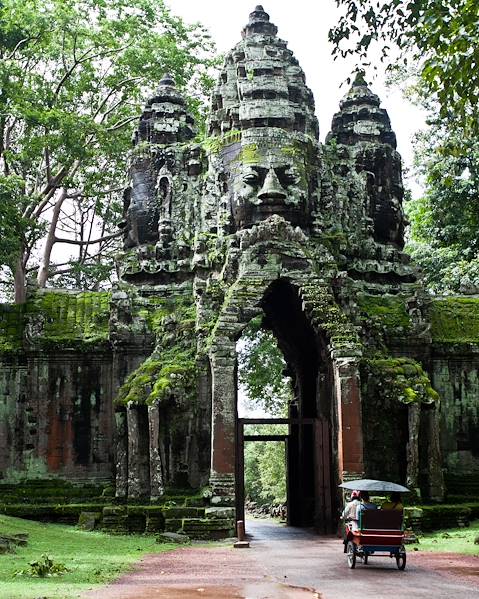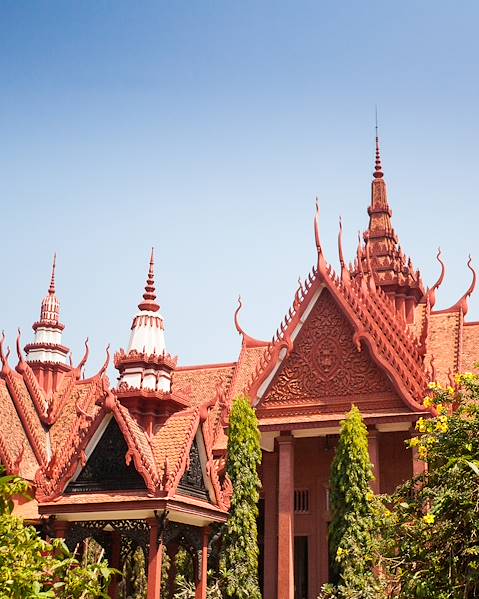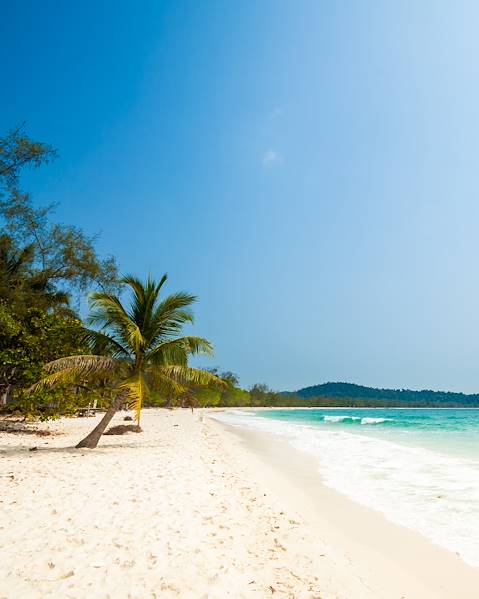Known for its temples, jungles and beaches, Cambodia is a compact country that’s relatively easy to navigate. Roads have improved in recent years, but conditions can vary widely from the dry to the wet season, and it can take a while to cover even short distances. It’s best to view transport in Cambodia as all part of the adventure. Whether it be navigating the organised chaos of the capital, arranging a trip across the country or figuring out how to get up Bokor Mountain, here’s our guide to transport in the Kingdom of Wonder.
By Plane
Domestic flights are a swift and comfortable way to get around, and a great way to avoid Cambodia’s unpredictable roads. Air travel is generally good value and the three main airports in Phnom Penh, Siem Reap and Sihanoukville are well connected by shuttle flights. Travellers only need to take one short flight (between Phnom Penh and Siem Reap) to visit the major tourist destinations within the country. Our expert travel consultants know how to secure the best seats at the best prices, so you don’t need to worry.
By Car
We wouldn't recommend driving around Cambodia. It’s tricky to rent a self-drive car and driving can be a headache. Problems include producing acceptable documentation (your driving licence from home may or may not be deemed sufficient), poor road conditions, haphazard driving by others and insufficient insurance – any loss or damage to the vehicle is your responsibility. Given all this, it’s far less hassle, and far more comfortable, to hire a car and driver. Renting a car-with-driver is certainly a convenient and flexible way to explore Phnom Penh and Siem Reap. Just be sure to hire from a reputable company and to choose an air-conditioned car (or even better, trust our experts to take care of the arrangements and keep you comfortable).
By Bus
The easiest and cheapest way to travel between Cambodia’s major towns is by bus, a network that has improved in recent years. Phnom Penh, Siem Reap, and Sihanoukville are the main hubs. Bear in mind that buses range from downright unsafe, to more comfortable affairs that boast WiFi and air-conditioning. The online portal CamboTicket enables users to see reviews based on safety, reliability and service, and to book tickets. When it comes to local buses, Phnom Penh is the only city with any public transport to speak of, with a small network covering major swathes of the centre and outskirts.
By Taxi
City taxis are available in Phnom Penh and Siem Reap. Private taxis can be hailed on the street or arranged through your hotel, while ride-hailing apps include Grab and Exnet. Taxis are quicker than the buses but, of course, more expensive.
By Tuk-Tuk
Tuk-Tuks – two-wheeled carriages pulled by motorbikes – are a popular mode of transport in Cambodia. There’s no shortage of them waiting to ferry tourists about, typically at heavily inflated prices. Be sure to negotiate the fare before getting in and carry small dollar bills or riel to avoid any awkward issues on arrival. PassApp dominates the ride-hailing market, with its rickshaw-style tuk-tuks flooding the capital and Siem Reap’s roads. Given passengers can sidestep the hassle of haggling, they are quickly becoming the number one option for many.
By Moto
Motorbike taxis, or motos, are a common way to travel short distances, although riding on the back of a moto in the middle of hectic city traffic isn’t everybody’s idea of fun. Passengers ride pillion behind the driver and Cambodians often squeeze on three or even four at a time. Moto drivers tend to congregate around transport stops and local landmarks so visitors can expect to be approached on a regular basis. Passengers must wear helmets, so if your driver can’t give you one, don’t get on.
By Train
Trains are not very common in Cambodia. Routes exist between Phnom Penh and Sihanoukville, from Phnom Penh to Poipet and between the capital and Battambang, but services were suspended during the pandemic, with some yet to resume. Also, the train being used for the Phnom Penh-Battambang service is an ex-State Railways of Thailand diesel railcar with opening windows and fans, but no air-conditioning. While improvements are being made, we’d recommend sticking to other modes of transport in Cambodia.
By Boat
Boats can be a great way to combine sightseeing, travel, history and relaxation. It isn’t the most efficient or cost-effective way to travel, but the journeys can be scenic and fun. You can take a boat from Phnom Penh to Siem Reap, and between Siem Reap and Battambang. The trip to or from Phnom Penh isn’t particularly picturesque, and the Tonle Sap Lake is so vast it’s more like being at sea. The trip to or from Battambang is more interesting, combining sailing across the Tonle Sap with a journey down the Sangker River. Boat services are operational most of the year, closing in peak season (April, May, and June) when the water levels are too low. Options range from ferry boats to traditional wooden boat tours to speed boat services. Most people tend to sit on the top for a better view, so bring plenty of sun cream and enjoy the ride.
By Bike
Cycling can be a rewarding experience in Cambodia, at least away from the big cities. Just remember that motorised traffic takes precedence over bicycles, so you may have to veer onto the verge to get out of the way of speeding vehicles. Many bikes in Cambodia are gearless antiques, although some hotels have good mountain bikes for rent. Cycle rickshaws are also a great way to go, they are very environmentally friendly, and you’ll be supporting the local community.
There are many different modes of transport in Cambodia. At Original Travel, our trips are tailored to you and your individual expectations, needs and desires, so you can experience every side of this magical country, whichever way you choose.
















